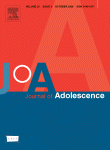Despite no basis in fact, newspapers continue to report on the increased risk of suicide around the Thanksgiving, Christmas and New Year holidays. An analysis of newspaper reporting over the past seven years released today by the Annenberg Public Policy Center shows that this story represents about half of all holiday-relevant suicide reporting. Stories linking
Health
Likelihood of HPV Vaccination Affected by How Information Is Presented, Penn Study Reveals
The way that the vaccine for human papillomavirus is described can affect whether women decide to seek vaccination, according to a study by researchers at the Center of Excellence in Cancer Communication Research of the University of Pennsylvania’s Annenberg School for Communication. The research was presented in Boston at the American Association for Cancer Research’s
More Than 1 Million Young People Use Internet Gambling Sites Each Month
Rates of Online Gambling Among Males 18-22 Doubled Last Year Two days after Congress cracked down on online gambling, new data released today show that more than one million young people currently are using Internet gambling sites on a monthly basis. Among males 18 to 22, Internet gambling doubled in the past year. The new
Local News Coverage of Suicides Triggers More Copycats than National News Stories
News coverage of suicides by local television and newspapers is more likely to trigger suicide attempts in others than national news stories on the subject, according to a new study that tracked reporting and health statistics in six U.S. cities. The study, published in the current issue of the Journal of Communication, is the most
Holiday Suicide Reporting Gets More Accurate
The Media and the Holiday Suicide Myth: Press Reporting of the Link Declines The percentage of stories debunking the holiday-suicide myth has more than doubled since 1999. Based on a review of over 300 stories published over a six-year period there has been a drop in the number of stories in which the holiday-suicide link
Card Playing Trend in Young People Continues
About 2.9 Million Young People Gamble on Cards in Average Week; Increased Use of Internet Gambling Sites Also Observed The results of the Annenberg Public Policy Center’s 2005 National Annenberg Risk Survey of Youth (NARSY) indicate that the likelihood that young men will gamble on card games continues to increase. Download the full news release
Youth Betting on Cards Rising, National Annenberg Risk Survey Shows
Increase Highest Among Young Men in School Card Players Also Likely to Gamble on Internet Greater Risks for Gambling Problems Seen if Trend Persists Card playing for money has risen among male youth ages 14 to 22, according to the National Annenberg Risk Survey of Youth (NARSY) conducted in 2003 and again in 2004. The


